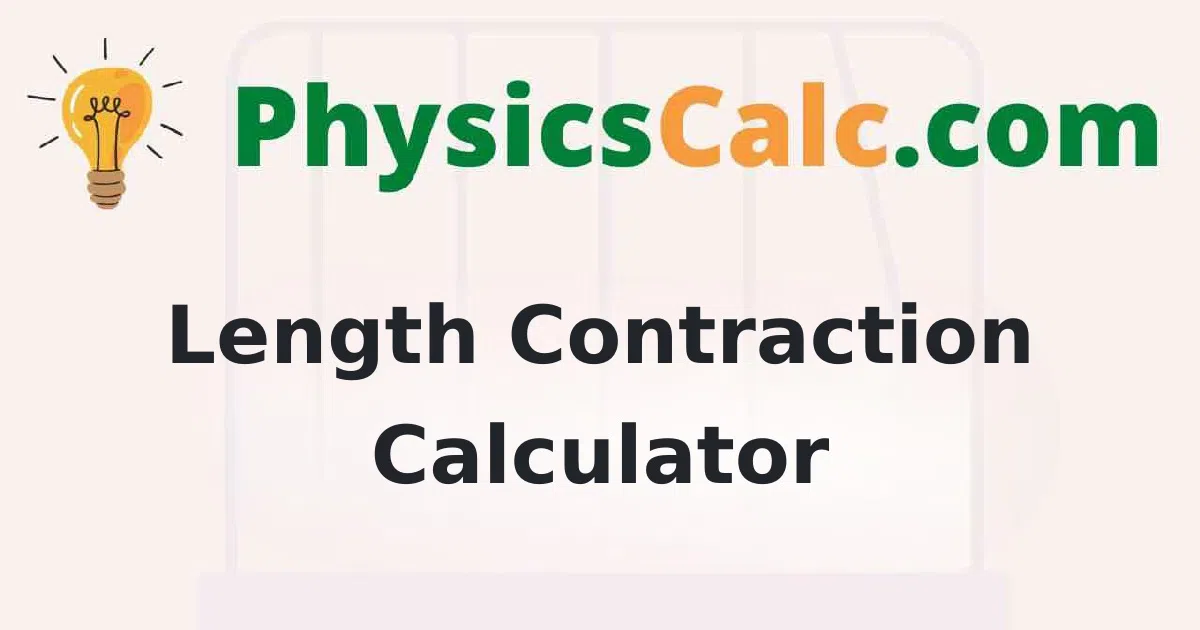Length Contraction Calculator
Online Length Contraction Calculator tool is helpful to determine the relative length of an object in a fraction of seconds. All you need to do is give observer velocity and length of the object details and click the calculate button to get the relativistic length contraction as an answer easily.
How to Calculate Relative Length?
The simple steps to find the relative length of an object is provided here. Go through these steps and get the answer.
- Check the length and observer velocity.
- Divide the square of the velocity by the square of the speed of the light.
- Subtract 1 from the result and apply square root to it.
- Multiply the result by the length to get the length contraction value.
Length Contraction Equation
As per the Einstein's theory of special relativity, the length of objects moving at relativistic speeds undergo a contraction along the dimension of motion. When an observer at rest see the moving object to be shorter in length.
The length contraction formula is given below:
relative length = l x √(1 - v²/c²)
Where,
l is the length of the object in its rest frame
relative length is the observed length of the object in motion
v is the speed of the object
c is the speed of light
Example
Question: A crew member of the spaceship measures the ship's length to be 150 m. The ship flies past earth at a speed of 0.700 times the speed of light. What would observers on earth will measure the length of the ship?
Solution:
Given that
Observer speed = 0.700 times the speed of light = 0.700c
Length l - 150 m
Relative length = l x √(1 - v²/c²)
= 150 x √(1 - (0.700c/c)²)
= 150 x √(1 - (0.700)²
= 150 - √(1 - 0.490)
= 107.25
Clarify your queries right after class and seek help on physics, chemistry concepts all at one place on Physicscalc.Com
Frequently Asked Questions on Length Contraction Calculator
1. How to calculate the length contraction?
The length contraction or relative length can be calculated using this formula. Relative length = l x √(1 - v²/c²). Here, l is the length of the object and v is the speed of the object. You have to substitute the values in the formula and solve to obtain the result.
2. What are the examples of length contraction?
Length contraction happens when an object at a speed of light. The other name for this relative length is Lorentz contraction. It affects all objects when they are moving.
3. Is time dilation the same as length contraction?
Length contraction means the shortening of distance. A clock in a moving frame will be seen to be running slow according to the Lorentz transformation. So, time dilation and length contraction are not the same.
4. Does length contraction affect height?
The contraction occurs in the dimension of the object's motion. If the object is moving horizontally, then horizontal contraction. So, there is no contraction of the height of the object.
